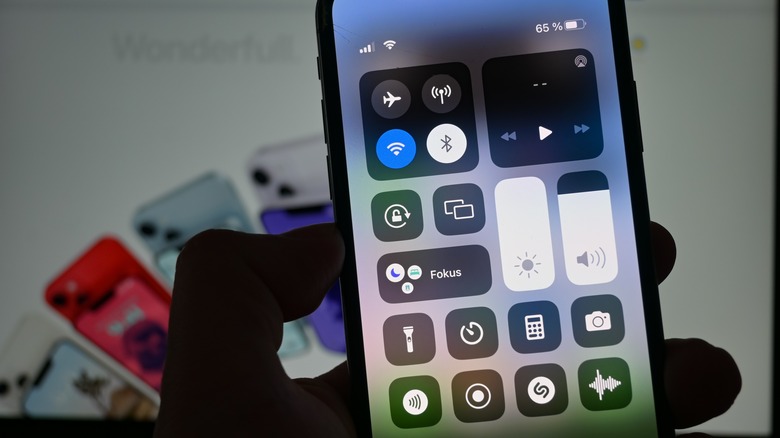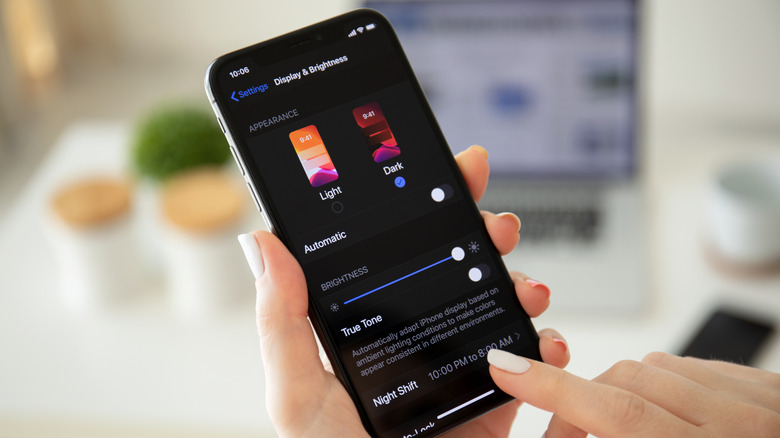What Is The Difference Between Night Shift And Dark Mode On iPhone?
According to the National Institutes of Health, an adult should aim for 7 to 9 hours of sleep per night. However, it has become increasingly rare to find someone who regularly completes their recommended sleep hours, and one of the main reasons behind this is excessive screen time. Sleepopolis reports that two in three people spend most of their time looking at their smartphone screens, which ultimately affects their sleeping hours. As it turns out, the blue light emitted by smartphone screens has a great impact on our circadian rhythm, which is responsible for signaling the brain when it's time to sleep.
To reduce the impact of blue light in our day-to-day lives, tech companies have come up with new innovations. On Windows, you'll find the Night Light option, enabling which gives your display a warmer color. Similarly, on your iPhone, you have Night Shift, which was introduced with iOS 9.3, and Dark Mode, which came with iOS 13.
While both features are ultimately designed for the same purpose — to reduce eye strain — there is a significant difference between the two. We'll explain the difference between the Night Shift and Dark Mode features in the iPhone and when you should use each one.
Night Shift and Dark Mode—The Difference Between Two iPhone Features
The blue light coming from your iPhone display mimics the sunlight to such an extent that it becomes difficult for the body to tell when the sun is down. So, when you use your iPhone even late at night, the blue light that the display emits makes your body believe that you're looking at the sunlight; as a result, you don't feel sleepy. But once you enable Night Shift, your iPhone automatically changes the display color to the warmer end of the spectrum, which mitigates the negative impact of blue light on your sleep.
Dark Mode, as you can guess by the name, darkens your iPhone interface. In layman's terms, after enabling dark mode, your iPhone will display white text on a black background instead of black text on a white background. One of the main benefits of dark mode is to protect your eyes from the strong brightness of your iPhone screen. These lights can cause serious issues like blurry vision, watery eyes, and headaches, even if you have Night Shift enabled on your iPhone.
So, you see, the difference between night shift and dark mode is simple — night shift gives a warmer tone to your iPhone display so that it becomes easy for your body to determine that the sun is down and it's time to sleep, and dark mode protects your eyes from the bright white iPhone screen.

